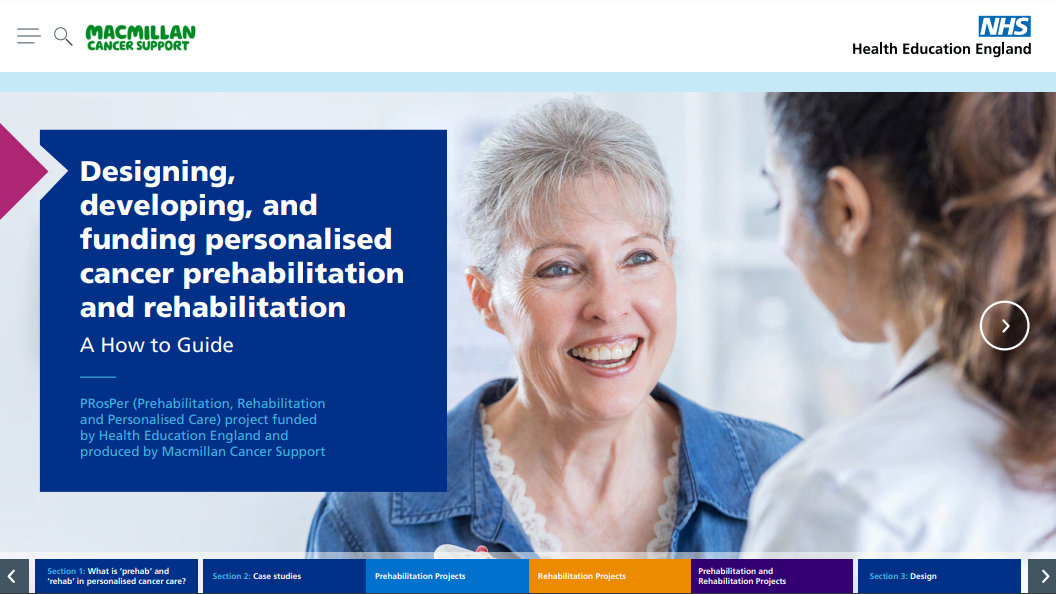
21 April 2022
The PRosPer programme provides e-learning on supporting people with cancer in personalised care and support planning, prehabilitation and rehabilitation. It also covers managing the consequences of cancer and its treatment, workforce development and service redesign. As part of PRosPer, an interactive ‘how to’ guide to the design, development and funding of cancer prehabilitation and rehabilitation has been produced. This includes many different case-study style examples of services from across the UK, a health economic framework and an easy-to-use cost consequence calculator.
The guide defines and explains the importance of prehabilitation and rehabilitation in the personalised care of patients with cancer and showcases examples of projects running across the cancer pathway, before, during, and after treatment. The guide is aimed at health professionals who might be considering the implementation of projects to support people at different stages of the cancer pathway, or those who may be leading in developing services for an organisation. The guide then invites individuals to focus on their particular area of interest by looking at interventions provided in a wide range of case studies. These are real case studies which are divided into prehabilitation and rehabilitation case studies and a section which showcases projects which combine both elements.
The ’design’ section of the guide illustrates how to design and implement your own prehabilitation or rehabilitation project or one that combines both elements. The main themes considered are:
Importantly the guide contains a link to software which allows the data gathered to be used in funding processes and calculations in a ‘Cost Consequences Calculator’.
The calculator is useful in a number of ways. It acts as a checklist for understanding what measures to consider and the data to collect. It can also be used to help develop a business case to demonstrate potential or expected costs and impacts. It may also be used to consider benefits realisation when a project has been running for a period of time and data have been collected on costs and impacts.
The calculator includes worked examples to demonstrate changes in the costs and the patient and other clinical outcomes, based on case study projects. Using this tool individuals will be able to use their own data to carry out their own estimates and develop economic scenarios.
The guide has been produced by Health Education England in partnership with Macmillan Cancer Support and be accessed here